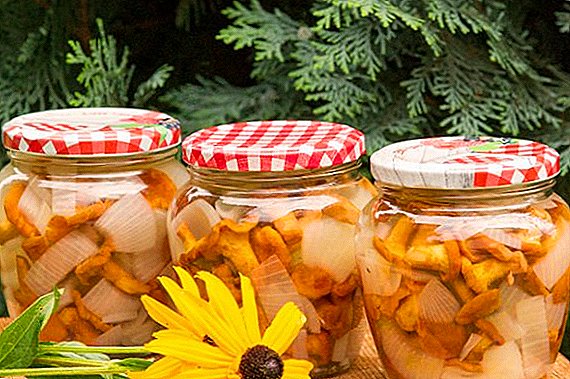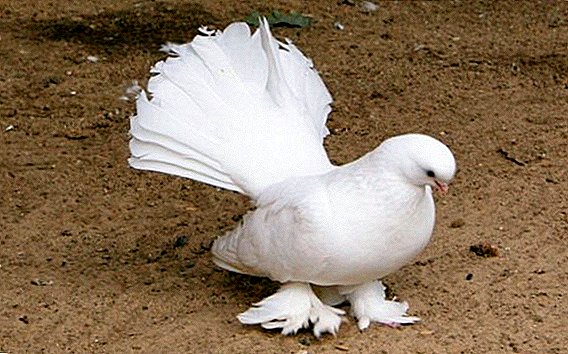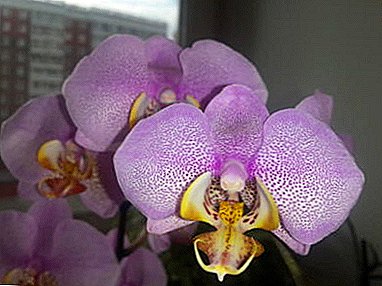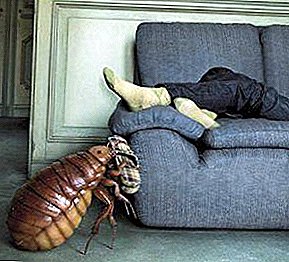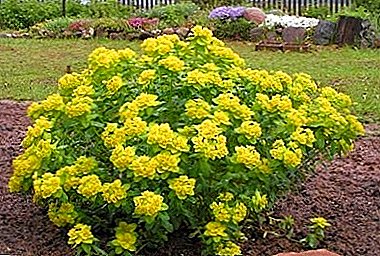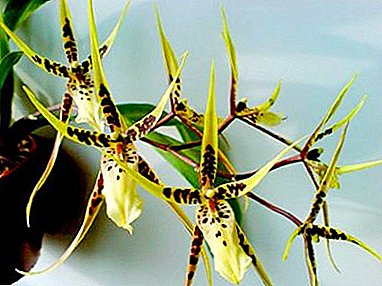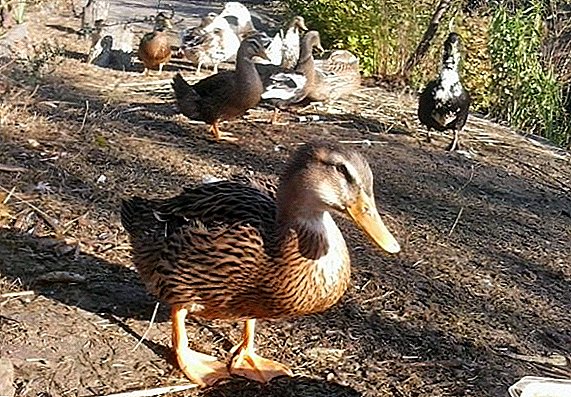 Not only in poultry farms, but also in many yards together with chickens often contain ducks.
Not only in poultry farms, but also in many yards together with chickens often contain ducks.
The variety of rocks is very large. In this article we will talk about the gray Ukrainian duck.
The origin of the gray Ukrainian duck
This duck owes its origin to the specialists of the Ukrainian Research Institute of Poultry. For years, workers have selected only the best representatives of domestic domestic and wild ducks. By crossing these two breeds, a gray Ukrainian duck appeared.
Breed standard and description
These aquatic have a well developed, strong and muscular body with widely spaced, strong, short legs. They are characterized by thick plumage of gray or clay color, which is very similar to the plumage of wild mallards.  On a slightly raised body is a small elongated head. In the drakes it is almost black with a greenish tinge, on the neck there is a white collar. The duck is distinguished by the presence of two black stripes on the head.
On a slightly raised body is a small elongated head. In the drakes it is almost black with a greenish tinge, on the neck there is a white collar. The duck is distinguished by the presence of two black stripes on the head.
Did you know? Ducks are very "talkative". The females are more vociferous, and the crackling of the drake resembles a crow crowing.
Characteristics of breed productivity
Gray Ukrainian is considered a meat breed and has the following characteristics:
- ducklings at the age of 2 months weigh about 2 kg;
- The weight of the female corresponds to 3 kg, and the drake - 3.5-4 kg. Such indicators they reach at the age of about 4 months;
- it is well gaining weight both in compound feeds and on duckweed, grass, feeding on various food wastes.
Despite the fact that the breed is meat, it has good egg production rates:
- rush all spring, starting in February;
- productivity for the year is 110-120 pieces. Egg weight - 70-80 g.
 With good care and maintenance in lighted and heated premises, the egg production of ducks can reach 250 eggs per year, and the weight of the eggs increases to 90 g.
With good care and maintenance in lighted and heated premises, the egg production of ducks can reach 250 eggs per year, and the weight of the eggs increases to 90 g.
The merits of the gray Ukrainian duck
The popularity of these waterfowl is due to their numerous advantages:
- early maturation and rapid weight gain;
- tasty meat and good egg production;
- survival rate of young stock - 96-98%;
- the presence of thick plumage;
- resistance to low temperatures;
- good immunity to diseases;
- unpretentious in food;
- get along well with other birds.
Disadvantages of a gray Ukrainian duck
We can say that these birds have almost no flaws. Except such as:
- fear of drafts;
- intolerance of overpopulation.
Important! The high density of birds makes them uneasy, which negatively affects egg production.

Breeding Ukrainian duck at home
Dilute and grow these waterfowl at home is easy. The main condition is to provide them with a spacious range.
Read about the peculiarities of growing such duck breeds: mulard, Peking, Bashkir, blue favorite, Gogol, Indian runner.
Nutrition and feeding
Ducks are herbivorous animals. But when feeding ducklings, you must follow these rules:
- Feeding ducklings in the first days consists of semi-liquid feed, diluted in milk.
- After a few days they can be given mash and mixtures with the addition of corn or wheat cereal, barley, grass meal, greens, vegetables, fish or bone meal and food waste. The most important condition is the freshness and quality of products.
- In the first 10 days, chicks are fed in small portions about 10 times a day.
- It is necessary to provide them with enough water.
Important! In order for waterfowl to have enough minerals in the diet, they need to be given bone meal, ash or crushed shell in separate tanks.
 Features of feeding in adulthood are as follows:
Features of feeding in adulthood are as follows:
- In addition to animal feed, they willingly eat grass, grain, algae, food waste.
- In the summer, it is enough for them to receive 25% of the grain; in the autumn and winter season, the amount of grain production should be increased to 50%.
- The diet requires the presence of such vegetables as beets, potatoes, pumpkin or cabbage, as well as fruits, such as apples. Compound feed is best given in the composition of wet mash with the addition of vegetables and herbs.
- The number of feedings corresponds to 3-4 times, with free range, most of the food they feed themselves. Ducks perfectly forage on the water.
Familiarize yourself with the rules of duck breeding and the most popular breeds of these birds for home breeding.
Bird care
These waterfowl do not require special care for themselves, but still it is necessary to consider some points:
- waterfowl needs walking, and it is good if there is a reservoir. The bird is bathing, eating algae and small insects. But the lack of a reservoir will not affect the performance of the ducks;
- cleaning and airing should be done regularly in the house;
- Ducks are not particularly susceptible to diseases, but can be affected by hepatitis, paratyphoid fever, helminthiasis or cloacitis. But with good maintenance and nutrition, your birds will be healthy. If you have the disease you need to contact a veterinarian

We advise you to learn how to raise ducks in an incubator and how to feed newborn chicks.
Conditions of detention
Despite its simplicity, the better the waterfowl content is, the greater the return will be. Therefore, it is desirable to adhere to such recommendations:
- ducks do not respond well to overpopulation, so for 1 square. m should not be more than 3 individuals;
- to prevent rodents from entering the house, the floors should be 25 cm above the ground;
- bedding made from straw, chips or peat should be dry. Its thickness is 25-30 cm;
- although the breed is well tolerated by cold, but it is better if the room temperature does not fall below zero;
- the house should be dry and need ventilation, but no drafts should be allowed;
- in winter, artificial lighting for at least 14 hours a day will significantly improve productivity;
- nests are required indoors, one per 5 hens. The nest size is 40 cm by 50 cm. The bottom is lined with dry grass or shavings;
- ducklings are kept separately from adults at a temperature of 25-30 degrees. On the 4th day, the temperature begins to decrease to 20 degrees. On 1 square. m accommodates up to 25 chicks;
- wooden feeders are used for dry food, and metal - for wet mash. Feeders height - about 15 cm;
- when kept in enclosed enclosures, it is necessary to have water tanks for swimming;
- even in winter, birds need to be let out for a walk.

Did you know? How a bird feels can be understood from its behavior. If she spreads feathers, then she is cold. An increase in food intake indicates the same.Growing ducks, you will provide yourself with tasty, slightly different from chicken meat: it is fatter and has a richer taste. In addition, you will receive large eggs that can be used for the preparation of mayonnaise and dough, as well as an incubation material. Blankets and pillows are made from duck down, and litter is considered an excellent fertilizer.


